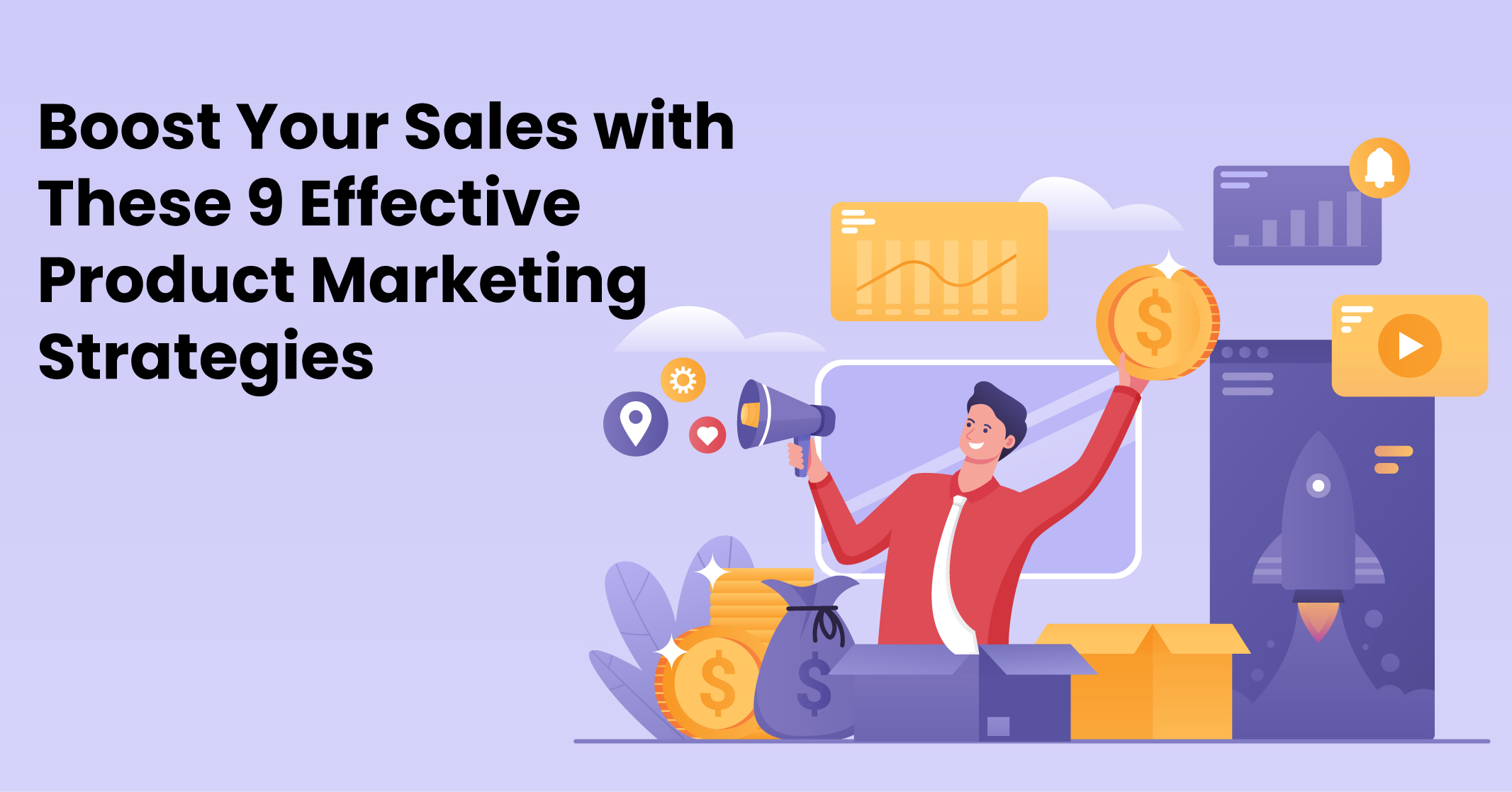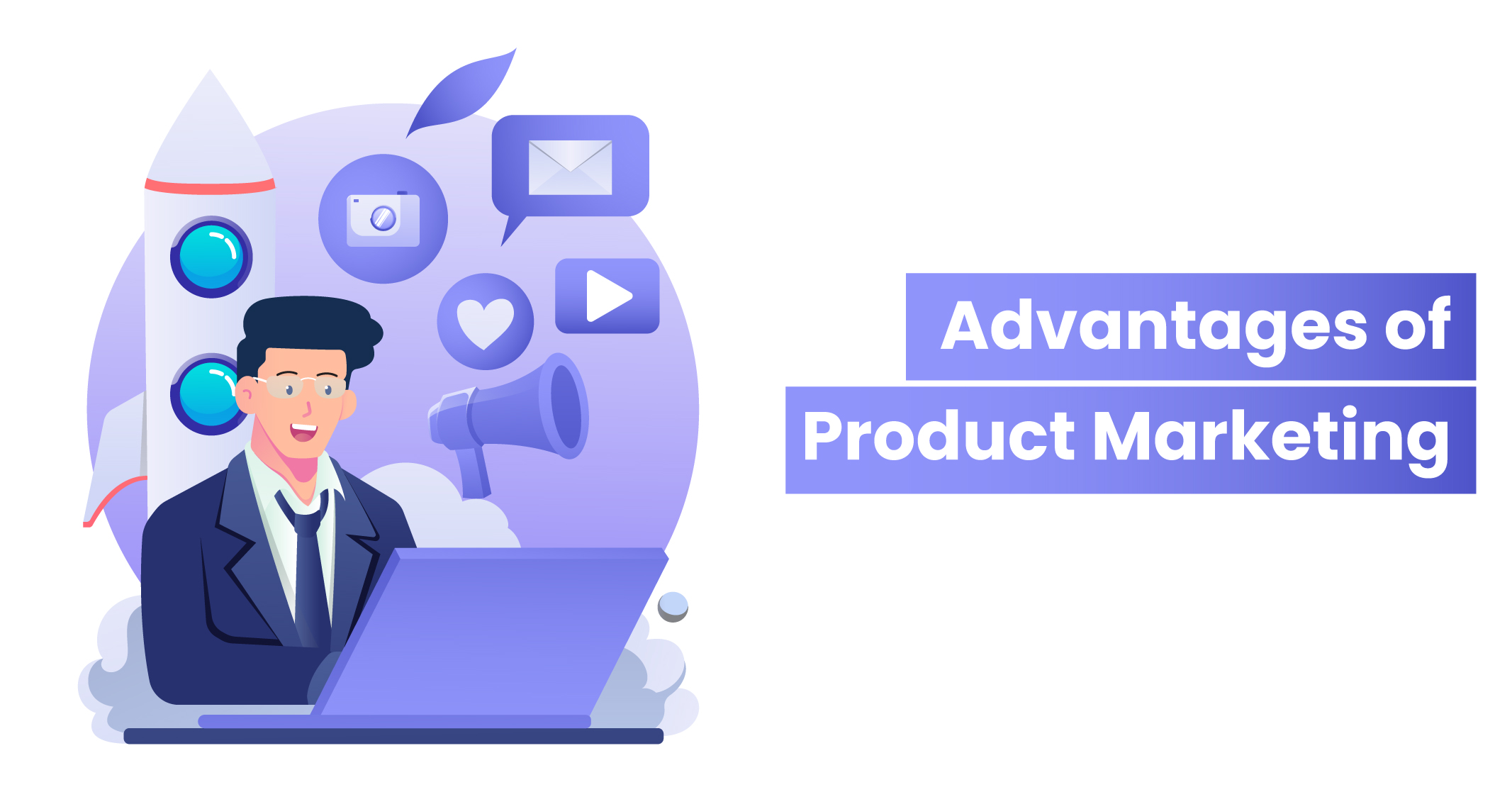I hope you enjoy reading this blog post.
If you want to get more traffic, Contact Us

Click Here - Free 30-Minute Strategy Session
Be quick! FREE spots are almost gone for this Month. Free Quote

To increase your chances of success and avoid becoming another statistic, it’s crucial to have a well-thought-out product marketing strategy in place. With over 30,000 products launched each year, a staggering 95 percent of them fail. Lack of preparation is often a significant factor behind these failures.
To turn the odds in your favour and drive more sales for your business, implementing the best product marketing strategies is essential. These strategies not only help mitigate risks but also provide a solid foundation for your business.

Click Here – Free 30-Minute Strategy Session
Be quick! FREE spots are almost gone for this Month
Today, we’ll dive into the world of product marketing, focusing on effective strategies to boost sales and ensure the stability of your business.
Let’s get started!
Product marketing encompasses the entire process of introducing a new product to the market, starting from research and development and extending to effective product launch strategies and beyond.
To succeed in product marketing, it is crucial to have a well-crafted strategy and a deep understanding of your target audience’s desires and requirements. By utilising the appropriate tone and messaging, you can effectively communicate the advantages of your product, drive sales and foster business growth.
Whether you are embarking on your initial product launch or have experience with multiple product releases, having a set of product marketing ideas can serve as a valuable guide to help you achieve your business objectives.
Learn More: Understanding Market Research

From effective product positioning and targeted advertising to building brand recognition and customer trust, product marketing plays a crucial role in connecting your product with the right audience.
It helps you showcase the unique features and benefits of your offering, while also addressing customer needs and standing out from the competition.
Benefits of Product Marketing:
Learn More: What is the “Funnel” in Digital Marketing?
Let’s explore two notable brands that have successfully implemented product marketing strategies:
Poo-Pourri: Poo-Pourri is a remarkable example of effective product marketing. Despite addressing a sensitive and taboo topic (bathroom odour elimination), Poo-Pourri approached it with humour and relatability.
The brand found its platform by utilising video advertising, both on television and online, which allowed them to showcase their unique sense of humour. Additionally, Poo-Pourri targeted specific markets and situations to effectively convey their message.
Key Takeaway: Learn from Poo-Pourri’s success by finding your platform, leveraging humour and targeting specific markets to drive your product’s message.
Tesla: Tesla’s product marketing strategy is centred around its brand statement, which focuses on all-electric vehicles and clean energy generation. By aligning its products with its brand identity, Tesla has become synonymous with electric cars and clean energy solutions.
Their commitment to their brand statement has helped them dominate the electric vehicle market, with Tesla currently holding a significant market share.
Key Takeaway: Follow Tesla’s example by developing products that align with your brand identity and staying true to your brand statement, resulting in market dominance and brand recognition.
Learn More: What is the Role of Digital Marketing?
Drawing inspiration from successful businesses’ product marketing examples, it’s essential to explore how you can apply these insights to your own business or clients.
By leveraging effective product marketing strategies, you can propel your business in the right direction and achieve sustained growth. Let’s delve into a range of strategies that can steer your business forward and ensure its continued success.
Don’t underestimate the power of content marketing for “boring” products. With some creativity, you can make even the most mundane offerings exciting and engaging. Your content marketing strategy doesn’t have to be extravagant but it can still yield impressive results.
Consider incorporating various content types into your strategy, such as blog posts, videos, podcasts, infographics, white papers and downloadable guides. These diverse formats can captivate your audience and drive meaningful engagement.

Product launches don’t always go according to plan. According to Gartner, approximately 45 percent of product launches experience delays, leading to unfavourable outcomes.
However, this reality should serve as a motivator to invest time and effort into developing a clear and comprehensive product marketing strategy.
A successful product launch plan consists of three key stages:
Pre-launch:
Launch:
Post-launch:
Timing plays a critical role in business success. Seizing opportunities at the right moment can help you tap into niche markets and attract enthusiastic consumers.
Failing to act promptly or moving too slowly can be detrimental, particularly for new companies.
However, what if you find yourself in the following situations:
No need to worry. You can leverage the power of piggybacking on established platforms.
Influencers possess large, existing audiences that can provide the access you need. Finding them is relatively straightforward, whether through Instagram or influencer marketplaces like TRIBE.
Here’s a simplified breakdown of the process:
Learn More: The Dos and Don’ts of Influencer Marketing
Customer retention can be challenging for various reasons, such as inadequate customer service, reduced buyer spending, emerging competition or shifting trends. While these factors may be beyond your control, implementing a proven product marketing strategy enables you to focus on retargeting your existing customers.
By directly marketing to them, addressing their needs and fostering a sense of brand loyalty, you can effectively mitigate the risk of losing valuable customers.
Pain points play a crucial role in e-commerce marketing strategies, yet they are sometimes overlooked. Recognising their significance is essential because they:
To identify common pain points, consider utilising surveys, conducting competitive analysis, seeking input through social media or leveraging social listening tools. These approaches can provide valuable insights into customer challenges and facilitate targeted solutions.

After launching your product, it’s important to remain open to potential changes in your target markets and product marketing strategies. The launch itself may reveal new opportunities for your product, including the possibility of identifying a niche market or a unique value proposition.
The typical launch process consists of three stages:
Product repositioning enables you to realign your product’s positioning to ensure its relevance in an ever-changing market environment.
Repositioning your product can also involve exploring changes to your pricing structure, which can significantly impact consumer behaviour. Adjusting pricing can be as straightforward as lowering or increasing the price or offering exclusive promotions.
One effective pricing strategy utilised by companies like Peloton is the “good-better-best” approach, which offers different pricing tiers to cater to varying customer preferences and budgets. Implementing such pricing strategies can optimise sales and enhance customer perception of value.
The organisers can listen to the recording and readily share the information with all group members, promoting effective communication within the group.
You can expand this approach by inviting more individuals to attend additional events, repeating the process as needed.
This successful approach eventually led to the organisation hosting its meetups and even launching a dedicated conference for the targeted communities.
The initial traction gained through these efforts attracted a significant angel investment of $500k, following a period of bootstrapping.
This offline strategy builds on the platform piggybacking concept by fostering in-person connections and interactions.
Implementing such unique strategies helps you distinguish yourself from the crowd. Instead of relying solely on cold emails with low response rates, consider meeting people at events or utilising creative mailings to capture attention.
While these approaches require more effort, they facilitate traction and provide opportunities to engage with potential prospects.
There are four kinds of products. They are:
Convenience products are everyday items that customers readily need and can easily find, such as bread, milk, and toiletries.
Shopping products, on the other hand, are purchased less frequently, requiring customers to invest more time and effort in comparing options before deciding. Examples include smartphones, laptops and cars.
Specialty products are unique and high-end items that customers are willing to make an extra effort to obtain. These can include luxury watches, high-end fashion items, and gourmet food products.
Unsought products are those that customers may not realise they need or want until they come across them, such as insurance policies or emergency car repair services.
By understanding the nature of your product, you can tailor your marketing strategy to effectively reach your target audience. For convenience products, the focus may be on accessibility and affordability, while specialty products may highlight their distinctive features and craftsmanship to justify a higher price point.
Learn More: What is the Most Effective Online Marketing Strategy?
Product marketing strategies can bring benefits to businesses of all sizes, ranging from small startups to large corporations. Regardless of whether you’re offering physical products such as clothing or electronics or digital products like software or online courses, implementing effective product marketing strategies is crucial for attracting and retaining customers.
Some common product marketing strategies include:
Other potential marketing approaches include traditional methods like print ads and TV, word-of-mouth marketing, unconventional guerrilla tactics, or in-store promotions.
Product marketing is distinct from general marketing as it emphasises the distinctive qualities and advantages of a particular product. Instead of focusing on brand image, product marketers concentrate on understanding the target audience, positioning the product in the market, and setting it apart from competitors.
By implementing effective product marketing strategies, they generate demand for the product and drive its success.
Implementing effective product marketing strategies throughout the entire product development process can help ensure timely milestones and increase the chances of success. With a well-defined strategy that addresses risks and anticipates customer needs, you can give your company a competitive edge.
Consider common product marketing strategies such as reevaluating and repositioning your product, implementing a comprehensive content marketing plan and leveraging the potential of retargeting existing customers.
Don’t forget to test and refine your chosen strategies to find what works best for your business. By doing so, you can continue building traction and driving growth.
For expert assistance in implementing product marketing strategies and driving targeted traffic to your website, reach out to Traffic Radius today.
Take your marketing efforts to new heights and achieve remarkable results. Contact us now!

LEAVE A REPLY